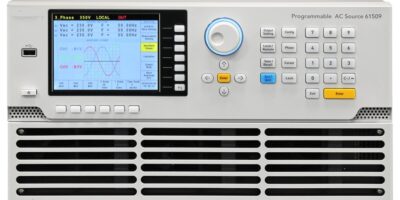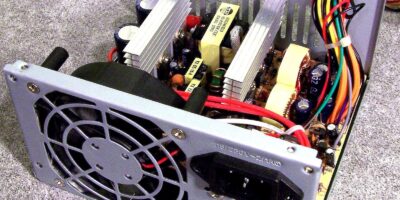The Global Optical Navigation Sensor market is expected to grow annually by 14.1% CAGR 2024 – 2033.
Overview of the Optical Navigation Sensor Market
1. Introduction to Optical Navigation Sensors
1.1 What Are Optical Navigation Sensors?
Optical navigation sensors are devices used to determine the position, movement, and orientation of objects by capturing and analyzing optical data. These sensors utilize light, typically in the form of laser or LED, and optical detectors to measure changes in position or velocity, translating them into digital signals for processing.
1.2 Applications of Optical Navigation Sensors
Optical navigation sensors are used in various applications across multiple industries:
- Consumer Electronics: In computer mice, smartphones, and gaming devices.
- Automotive: For advanced driver-assistance systems (ADAS) and autonomous vehicles.
- Aerospace: In spacecraft and aircraft navigation systems.
- Industrial Automation: For precision control and robotics.
- Healthcare: In medical imaging and surgical instruments.
- Military and Defense: For guidance and targeting systems.
2. How Optical Navigation Sensors Work
2.1 Basic Working Principle
Optical navigation sensors work by illuminating a surface with a light source and capturing the reflected light with a photodetector. The sensor analyzes the pattern of the reflected light to determine the movement and position of the object.
- Illumination: A light source (laser or LED) illuminates the target surface.
- Reflection: The light reflects off the surface back to the sensor.
- Detection: A photodetector captures the reflected light.
- Analysis: The sensor’s processor analyzes the light patterns to determine movement or changes in position.
- Output: The sensor outputs data corresponding to the detected movement, typically in the form of digital signals.
2.2 Key Components
- Light Source: Provides illumination, usually a laser or LED.
- Photodetector: Captures the reflected light.
- Optical System: Focuses and directs the light to and from the target surface.
- Processor: Analyzes the light patterns and calculates movement or position.
- Interface: Outputs the processed data to a connected system or device.
2.3 Types of Optical Navigation Sensors
- Optical Mice Sensors: Used in computer mice to track movement on a surface.
- Optical Flow Sensors: Measure the relative motion of an object with respect to a surface.
- Laser Doppler Sensors: Utilize the Doppler effect to measure velocity.
- Structured Light Sensors: Use projected patterns to analyze the surface geometry.
3. Historic Developments in Optical Navigation Sensors
3.1 Early Innovations
- 1960s-1970s: Initial developments in optical sensing technology, including basic light detection mechanisms.
- 1980s: Emergence of optical mice using infrared LEDs and photodetectors for computer navigation.
3.2 Key Milestones
- 1999: Introduction of the first commercial optical mouse by Microsoft, which replaced the traditional mechanical ball mouse.
- 2000s: Development of high-resolution optical sensors for gaming and professional use.
- 2010s: Advancements in miniaturization and integration of optical sensors into mobile devices and automotive applications.
- 2020s: Growth in the use of optical sensors for autonomous systems, drones, and augmented reality (AR) applications.
3.3 Recent Innovations
- Integration with AI: Use of artificial intelligence for enhanced object detection and tracking capabilities.
- Improved Resolution: Development of sensors with higher resolutions and faster processing speeds.
- Wireless and Battery Efficiency: Improvements in wireless communication and battery life for portable devices.
- Multi-Sensor Fusion: Combining optical sensors with other types of sensors (e.g., accelerometers, gyroscopes) for more robust navigation solutions.
4. Why Purchase the Optical Navigation Sensor Market Report?
4.1 Comprehensive Market Insights
- Detailed Market Analysis: In-depth analysis of the current market trends, size, and growth potential.
- Competitive Landscape: Insights into the key players, their market strategies, and competitive positioning.
- Segmentation Analysis: Breakdown of the market by application, technology, end-user, and geography.
4.2 Technological Trends and Innovations
- Emerging Technologies: Exploration of new and emerging technologies in optical navigation sensors.
- Product Developments: Information on the latest product launches, improvements, and innovations.
- Future Trends: Predictions on upcoming trends and technological advancements shaping the market.
4.3 Strategic Decision-Making
- Investment Opportunities: Identification of potential investment opportunities within the market.
- Market Forecasts: Reliable forecasts to assist in strategic planning and decision-making.
- Risk Assessment: Analysis of potential risks and challenges in the market.
4.4 Competitive Intelligence
- Company Profiles: Detailed profiles of leading companies, including their financial performance, product portfolios, and strategies.
- Market Share Analysis: Evaluation of the market share of major players and their competitive dynamics.
- Benchmarking: Comparison of products, services, and technologies across different market players.
4.5 Market Entry and Expansion
- Entry Strategies: Recommendations for new entrants looking to enter the market.
- Expansion Opportunities: Guidance on potential areas for business expansion and market penetration.
- Regulatory Insights: Information on regulatory requirements and compliance standards relevant to the market.
4.6 Customer and Market Trends
- Consumer Behavior: Insights into consumer preferences and behaviors affecting the market.
- Demand Drivers: Analysis of factors driving demand in different applications and regions.
- Feedback and Satisfaction: Evaluation of customer satisfaction and feedback on current products and technologies.
Receive the FREE Sample Report of Optical Navigation Sensor Market Research Insights @ https://stringentdatalytics.com/sample-request/optical-navigation-sensor-market/10708/
Market Segmentations:
Global Optical Navigation Sensor Market: By Company
• PixArt
• CODICO
• Silicon Labs
• Broadcom
• Vishay
• Omron
• ROHM
• Panasonic
• Honeywell
• AMS
• Texas Instruments (Ti)
• ON Semiconductor (On)
Global Optical Navigation Sensor Market: By Type
• Laser
• Integrated IR LED
• Red LED
• Other
Global Optical Navigation Sensor Market: By Application
• Computer Mice
• Aircraft
• Submarines
• Space Shuttles
• Missiles
• Others
Regional Analysis of Global Optical Navigation Sensor Market
All the regional segmentation has been studied based on recent and future trends, and the market is forecasted throughout the prediction period. The countries covered in the regional analysis of the Global Optical Navigation Sensor market report are U.S., Canada, and Mexico in North America, Germany, France, U.K., Russia, Italy, Spain, Turkey, Netherlands, Switzerland, Belgium, and Rest of Europe in Europe, Singapore, Malaysia, Australia, Thailand, Indonesia, Philippines, China, Japan, India, South Korea, Rest of Asia-Pacific (APAC) in the Asia-Pacific (APAC), Saudi Arabia, U.A.E, South Africa, Egypt, Israel, Rest of Middle East and Africa (MEA) as a part of Middle East and Africa (MEA), and Argentina, Brazil, and Rest of South America as part of South America.
Click to Purchase Optical Navigation Sensor Market Research Report @ https://stringentdatalytics.com/purchase/optical-navigation-sensor-market/10708/
Optical Navigation Sensor Market: Uses, Case Studies, Demand, and Scope
1. Uses of Optical Navigation Sensors
Optical navigation sensors find applications across a variety of industries due to their ability to provide precise motion tracking and positioning. Here are some key uses:
1.1 Consumer Electronics
- Computer Mice: Optical navigation sensors are widely used in computer mice to detect movement on surfaces and translate it into cursor movement on the screen.
- Smartphones and Tablets: Integrated into mobile devices for features like optical image stabilization, gesture recognition, and augmented reality applications.
- Gaming Devices: Used in gaming controllers and VR headsets for precise motion tracking and enhanced user experience.
1.2 Automotive
- Advanced Driver-Assistance Systems (ADAS): Assist in lane departure warnings, collision avoidance, and autonomous driving by tracking vehicle position and surroundings.
- Navigation Systems: Enhance GPS accuracy by integrating optical sensors to provide more precise positioning data.
1.3 Aerospace
- Spacecraft Navigation: Used in spacecraft for docking, landing, and orbital maneuvers by providing accurate position and velocity measurements.
- Unmanned Aerial Vehicles (UAVs): Enable precise navigation and stability control in drones and other UAVs.
1.4 Industrial Automation
- Robotics: Provide real-time position and motion tracking in robotic arms and automated systems, enhancing precision and efficiency.
- Manufacturing: Used in conveyor systems, quality control, and automated assembly lines to track movement and ensure accuracy.
1.5 Healthcare
- Medical Imaging: Assist in imaging systems for tracking instruments and patient movement.
- Surgical Instruments: Integrated into surgical tools to provide real-time tracking and improve precision during procedures.
1.6 Military and Defense
- Guidance Systems: Employed in missile and drone navigation for precise targeting and guidance.
- Surveillance: Used in optical surveillance systems for monitoring and reconnaissance missions.
1.7 Augmented Reality (AR) and Virtual Reality (VR)
- Headsets: Provide motion tracking for AR/VR headsets, enabling immersive experiences by accurately tracking head and hand movements.
- Gaming and Simulations: Enhance interactive experiences by providing precise motion and position data.
2. Case Studies in Optical Navigation Sensor Applications
2.1 Optical Sensors in Automotive ADAS
Company: Tesla
Application: Integration of optical sensors in the Tesla Autopilot system for lane keeping, collision avoidance, and autonomous driving.
Outcome: Enhanced safety features, improved driver assistance, and progression towards fully autonomous vehicles. Tesla’s use of optical sensors has contributed to the development of advanced driver assistance features that improve vehicle safety and navigation accuracy.
Details: Tesla’s Autopilot system employs a combination of cameras, radar, and ultrasonic sensors. The optical sensors specifically contribute to lane detection, obstacle recognition, and traffic sign identification, enhancing the overall effectiveness of the system.
2.2 Optical Navigation in Spacecraft
Organization: NASA
Application: Use of optical navigation sensors in the Mars Rover for surface navigation and obstacle avoidance.
Outcome: Successful deployment and operation of rovers on Mars, enabling precise navigation and exploration of the Martian surface.
Details: NASA’s Mars rovers utilize optical navigation sensors to autonomously navigate the Martian terrain, identify obstacles, and plan safe paths. These sensors are crucial for conducting scientific experiments and collecting data from various locations on Mars.
2.3 Optical Mice in Gaming
Company: Logitech
Application: Development of high-precision optical sensors for gaming mice.
Outcome: Enhanced gaming experience with improved accuracy and responsiveness, leading to increased market share and customer satisfaction.
Details: Logitech’s gaming mice use advanced optical sensors that offer high DPI (dots per inch) settings, providing gamers with precise control and faster response times. This has made their products popular among professional and casual gamers alike.
2.4 Optical Sensors in Industrial Robotics
Company: ABB
Application: Integration of optical navigation sensors in robotic arms for manufacturing processes.
Outcome: Increased precision and efficiency in automated assembly lines, leading to higher productivity and reduced error rates.
Details: ABB’s industrial robots use optical sensors to track the position of objects and tools with high accuracy, enabling precise movements and assembly operations in various manufacturing environments.
2.5 Optical Sensors in Medical Imaging
Company: Medtronic
Application: Use of optical sensors in surgical instruments for minimally invasive procedures.
Outcome: Improved precision in surgeries, reduced recovery times for patients, and enhanced imaging quality.
Details: Medtronic’s surgical instruments equipped with optical sensors provide real-time feedback on the position and movement of the instruments during procedures, allowing surgeons to perform complex operations with greater accuracy.
3. Demand for Optical Navigation Sensors
3.1 Market Drivers
- Increasing Demand for Automation: The rise in industrial automation and robotics drives the need for precise navigation and positioning sensors.
- Growth of Consumer Electronics: The proliferation of smartphones, gaming devices, and AR/VR applications fuels demand for optical sensors.
- Advancements in Autonomous Systems: Development in autonomous vehicles and drones relies on optical sensors for accurate navigation and obstacle detection.
- Healthcare Innovations: Growing adoption of optical sensors in medical devices and imaging systems due to their precision and real-time capabilities.
3.2 Market Trends
- Miniaturization: Development of smaller, more efficient sensors for integration into compact devices.
- Integration with AI: Use of artificial intelligence to enhance the capabilities and applications of optical sensors.
- Wireless and Battery Efficiency: Advances in wireless technology and energy-efficient sensors for portable applications.
- Enhanced Resolution: Continuous improvement in sensor resolution and speed for more accurate and responsive navigation.
3.3 Challenges
- High Development Costs: Research and development costs associated with advanced optical sensors can be significant.
- Technical Limitations: Limitations in range, sensitivity, and environmental conditions can affect sensor performance.
- Competition from Alternative Technologies: Competing technologies, such as ultrasonic and radar sensors, may pose a challenge to the market.
3.4 Opportunities
- Expansion in Emerging Markets: Growing demand for consumer electronics and industrial automation in developing regions presents significant opportunities.
- Innovative Applications: New applications in fields like AR/VR, smart wearables, and autonomous systems continue to expand the market.
- Partnerships and Collaborations: Collaborations between tech companies and industries can drive innovation and market penetration.
4. Scope of the Optical Navigation Sensor Market
4.1 Segmentation
- By Application:
- Consumer Electronics
- Automotive
- Aerospace
- Industrial Automation
- Healthcare
- Military and Defense
- AR/VR
- By Technology:
- Laser-based Sensors
- LED-based Sensors
- Optical Flow Sensors
- By End-User:
- Manufacturers
- Healthcare Providers
- Automotive Companies
- Aerospace Agencies
- Consumer Electronics Firms
- By Geography:
- North America
- Europe
- Asia-Pacific
- Middle East & Africa
- Latin America
4.2 Growth Potential
- Consumer Electronics: Expansion in smartphones, gaming, and wearable devices.
- Automotive: Integration in advanced driver-assistance systems and autonomous vehicles.
- Industrial Automation: Increased adoption in robotics and manufacturing for enhanced precision.
- Healthcare: Growing use in medical imaging and surgical tools for improved accuracy.
- Military and Defense: Applications in guidance and surveillance systems.
- AR/VR: Rising demand for immersive experiences driving the use of optical sensors in headsets and controllers.
4.3 Future Outlook
The optical navigation sensor market is expected to continue its growth trajectory, driven by technological advancements and increasing applications across diverse sectors. The push towards automation, enhanced user experiences in consumer electronics, and the development of autonomous systems will likely fuel demand further. Emerging markets and new technological developments, such as AI integration and miniaturization, are expected to create new opportunities and expand the market’s reach.
About Stringent Datalytics
Stringent Datalytics offers both custom and syndicated market research reports. Custom market research reports are tailored to a specific client’s needs and requirements. These reports provide unique insights into a particular industry or market segment and can help businesses make informed decisions about their strategies and operations.
Syndicated market research reports, on the other hand, are pre-existing reports that are available for purchase by multiple clients. These reports are often produced on a regular basis, such as annually or quarterly, and cover a broad range of industries and market segments. Syndicated reports provide clients with insights into industry trends, market sizes, and competitive landscapes. By offering both custom and syndicated reports, Stringent Datalytics can provide clients with a range of market research solutions that can be customized to their specific needs.
Reach US
Stringent Datalytics
+1 346 666 6655
Social Channels:
Linkedin | Facebook | Twitter | YouTube




Leave a Reply